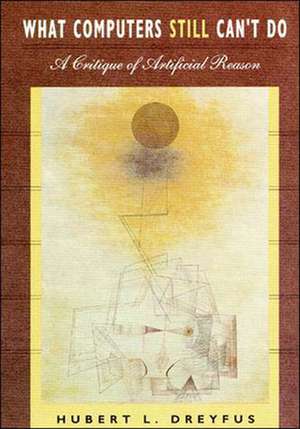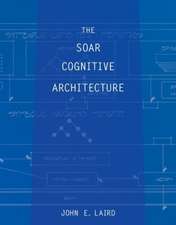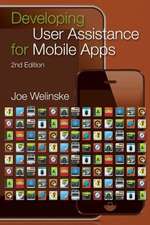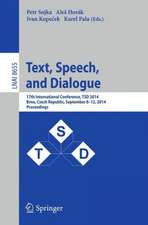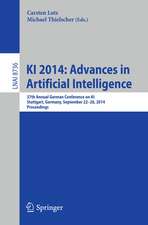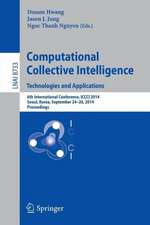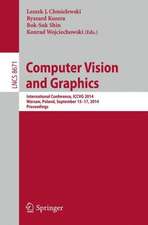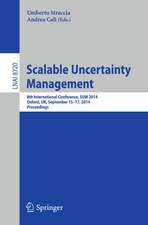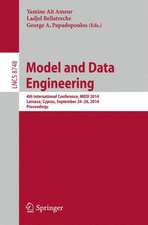What Computers Still Can′t Do – A Critique of Artificial Reason: The MIT Press
Autor Hubert L Dreyfusen Limba Engleză Paperback – 13 dec 1992
At a time when researchers were proposing grand plans for general problem solvers and automatic translation machines, Dreyfus predicted that they would fail because their conception of mental functioning was naive, and he suggested that they would do well to acquaint themselves with modern philosophical approaches to human beings. What Computers Can't Do was widely attacked but quietly studied. Dreyfus's arguments are still provocative and focus our attention once again on what it is that makes human beings unique.
Din seria The MIT Press
-
 Preț: 155.83 lei
Preț: 155.83 lei - 16%
 Preț: 661.59 lei
Preț: 661.59 lei -
 Preț: 128.67 lei
Preț: 128.67 lei -
 Preț: 229.64 lei
Preț: 229.64 lei -
 Preț: 168.59 lei
Preț: 168.59 lei - 14%
 Preț: 437.85 lei
Preț: 437.85 lei - 20%
 Preț: 336.15 lei
Preț: 336.15 lei -
 Preț: 102.29 lei
Preț: 102.29 lei -
 Preț: 107.35 lei
Preț: 107.35 lei - 20%
 Preț: 151.20 lei
Preț: 151.20 lei -
 Preț: 90.17 lei
Preț: 90.17 lei -
 Preț: 152.90 lei
Preț: 152.90 lei -
 Preț: 178.98 lei
Preț: 178.98 lei -
 Preț: 174.49 lei
Preț: 174.49 lei - 17%
 Preț: 599.95 lei
Preț: 599.95 lei - 17%
 Preț: 533.17 lei
Preț: 533.17 lei - 19%
 Preț: 123.87 lei
Preț: 123.87 lei -
 Preț: 203.41 lei
Preț: 203.41 lei - 16%
 Preț: 1201.02 lei
Preț: 1201.02 lei -
 Preț: 137.51 lei
Preț: 137.51 lei -
 Preț: 252.85 lei
Preț: 252.85 lei - 16%
 Preț: 637.28 lei
Preț: 637.28 lei - 12%
 Preț: 92.10 lei
Preț: 92.10 lei - 12%
 Preț: 523.07 lei
Preț: 523.07 lei - 20%
 Preț: 284.80 lei
Preț: 284.80 lei -
 Preț: 241.46 lei
Preț: 241.46 lei -
 Preț: 113.45 lei
Preț: 113.45 lei -
 Preț: 181.74 lei
Preț: 181.74 lei - 20%
 Preț: 338.95 lei
Preț: 338.95 lei -
 Preț: 290.07 lei
Preț: 290.07 lei - 16%
 Preț: 539.05 lei
Preț: 539.05 lei -
 Preț: 193.63 lei
Preț: 193.63 lei -
 Preț: 362.12 lei
Preț: 362.12 lei -
 Preț: 174.42 lei
Preț: 174.42 lei -
 Preț: 286.73 lei
Preț: 286.73 lei -
 Preț: 168.64 lei
Preț: 168.64 lei - 13%
 Preț: 96.18 lei
Preț: 96.18 lei - 20%
 Preț: 144.96 lei
Preț: 144.96 lei - 20%
 Preț: 127.07 lei
Preț: 127.07 lei - 14%
 Preț: 93.51 lei
Preț: 93.51 lei -
 Preț: 331.92 lei
Preț: 331.92 lei -
 Preț: 208.78 lei
Preț: 208.78 lei -
 Preț: 238.73 lei
Preț: 238.73 lei -
 Preț: 255.59 lei
Preț: 255.59 lei - 33%
 Preț: 126.59 lei
Preț: 126.59 lei -
 Preț: 366.77 lei
Preț: 366.77 lei -
 Preț: 175.42 lei
Preț: 175.42 lei -
 Preț: 250.93 lei
Preț: 250.93 lei -
 Preț: 252.58 lei
Preț: 252.58 lei -
 Preț: 115.25 lei
Preț: 115.25 lei
Preț: 339.42 lei
Preț vechi: 424.27 lei
-20% Nou
Puncte Express: 509
Preț estimativ în valută:
64.95€ • 67.00$ • 54.20£
64.95€ • 67.00$ • 54.20£
Carte tipărită la comandă
Livrare economică 27 martie-10 aprilie
Preluare comenzi: 021 569.72.76
Specificații
ISBN-13: 9780262540674
ISBN-10: 0262540673
Pagini: 408
Dimensiuni: 136 x 202 x 26 mm
Greutate: 0.52 kg
Ediția:Revised
Editura: Mit Press
Seria The MIT Press
Locul publicării:United States
ISBN-10: 0262540673
Pagini: 408
Dimensiuni: 136 x 202 x 26 mm
Greutate: 0.52 kg
Ediția:Revised
Editura: Mit Press
Seria The MIT Press
Locul publicării:United States
Descriere
For this edition of his now classic book, Dreyfus has added a lengthy new introduction outlining these changes and assessing the paradigms of connectionism and neural networks that have transformed the field.
